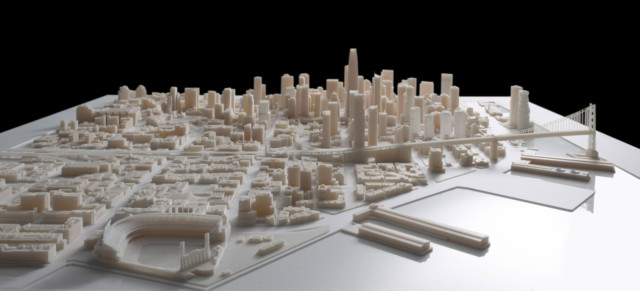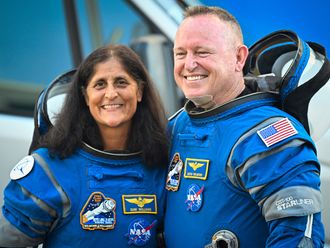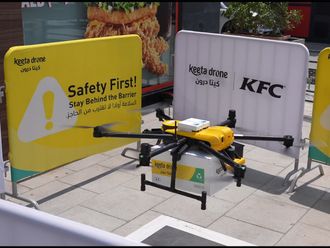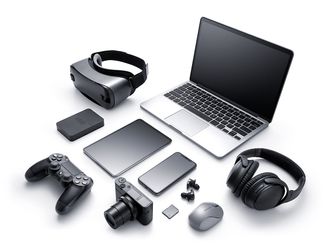
Dubai: Even when 3D printing technology is yet to gain traction in some regions; there is already research in a new technology called 4D printing.
Researchers are trying to come up with a way where objects, printed on 3D, will change shape and transform on their own by a code.
Research is already ongoing at Massachusetts Institute of Technology, Autodesk and some others.
“The industry is evolving, from 3D to 4D printing, which has self-assembling materials. Today’s 3D printing is static and layer by layer. Imagine you are able to print something that responds to the environment. When light is shone on it, it does something and when the light is switched off it does something else; that is the next evolution of printing,” Amar Hanspal, senior vice-president of information, marketing and platform products group at AutoDesk, told Gulf News in an exclusive interview.
He said that objects designed in this way can expand, fold or unfold into different forms when they come into contact with heat or water after being printed.
4D printing is fundamentally 3D printing with the added capability of self-assembling materials to transform over time.
Despite being in its infancy, it is difficult to say how it can be used; Hanspal said, and added that there is a big potential to develop this.
“We are just scratching the surface. It has the potential to be used in a number of innovative ways as it is further developed like biology, robotics, transportation, construction, space exploration, etc.” he said.
The 3D printing is changing the manufacturing sector in a big way.
“We can now make more complex shapes than ever before and make them cheaper than before. What these technologies are enabling is the reversal of industrial revolution,” he said.
The three industries AEC (architecture, engineering and construction), manufacturing, media and entertainment are adopting the 3D technology in a big way.
Already, he said that areas of medicine such as dentistry is benefitting from 3D printers and the next will be the consumer electronics industry in products such as headphones and wristwatches.
Given the company’s position as a maker of modelling and design software, Autodesk is entering into the 3D printer segment.
The US company plans to introduce an open software platform for 3D printing called Spark for hardware manufacturers and software developers to make it easier for companies to enter the 3D printing hardware market. Both Spark and 3D printers are likely to be launched this year.
“Our goal is different. It is similar to what Goggle did to Nexus smartphone. Google made a phone but they are not a phone company. We are making a 3D printer but our goal is not to be a printer company. We are trying to explore innovation,” Hanspal said.
Today, he said that 3D printing is not as easy as taking a Microsoft Word document. It is complicated.
“What we are trying to do with Spark is to make 3D printing easy. Spark is the software layer on top of a 3D printer,” he said.
Complex materials
The original 3D printing technology was based on plastic. Then it changed to metal and now, polymers, complex materials and carbon fibres are used for object building.
In the next couple of years, consumers can see “parts of cars and parts of airplanes” made by 3D printers. The construction industry is the best growth driver for Autodesk right now and with the industry booming in the region, especially in Dubai and Qatar, the company sees huge growth opportunities.
“There is a demand for fast and high quality construction projects in the region. Prefab construction is going to get more popular and that is where 3D printing can be useful, building materials offsite and bringing it onsite,” Hanspal said.
Audodesk’s software was used for most of the designing of Qatar Rail, AutoCad was used to design Burj Khalifa.
He said the Middle East is one of the fastest growing regions for Autodesk. Globally, our revenues have grown 10 per cent year on year and AEC business contributed 14 per cent.
Germany, Japan, US are the larger regions for Autodesk.
“We are getting large projects in the Middle East and some of our largest customers are located here,” he said.
“We got off to a good start and are optimistic for the year. The macro economic conditions around the world are improving and customers are spending again. Even though we are here for 30 years, our best days are in front of us. 3D printing, cloud movable technologies, Building Information Modeling, 3D special effects, the world is moving to that, so we are best positioned to benefit,” he said.
On acquisitions, he said that Autodesk acquires around 20 small- and medium-sized companies every year; most of them are technology companies.
“We have already acquired more than 10 companies so far this year and that pattern will continue,” he said.











